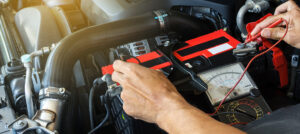
Oxygen Sensor
If you’re experiencing engine issues such as reduced fuel economy, rough idling, or check engine light, it could be due to a faulty oxygen sensor. The oxygen sensor plays a crucial role in your car’s fuel system, detecting the amount of oxygen in the exhaust and signaling the engine to adjust the air-to-fuel ratio. If your oxygen sensor is malfunctioning, it can cause your car’s engine to run inefficiently, leading to increased emissions and decreased performance. In this article, we’ll guide you through the steps of replacing your car’s oxygen sensor.
What is an Oxygen Sensor?
Before we dive into the steps of replacing your car’s oxygen sensor, let’s first understand what it is and how it works. An oxygen sensor is a small electronic device that is located in your car’s exhaust system. It measures the amount of oxygen in the exhaust and sends a signal to your car’s computer, which adjusts the air-to-fuel ratio accordingly. This process ensures that your car runs efficiently and produces fewer harmful emissions.
Signs of a Faulty Oxygen Sensor
There are a few signs that your car’s oxygen sensor might be faulty. Some of the most common signs include:
- Reduced fuel economy
- Rough idling or stalling
- Check engine light
- Failed emissions test
- Poor performance
If you’re experiencing any of these symptoms, it’s important to have your car inspected by a qualified mechanic to determine if your oxygen sensor needs to be replaced.
Tools and Materials You’ll Need
Before you get started, you’ll need to gather a few tools and materials. Here’s what you’ll need:
- Oxygen sensor wrench
- Penetrating oil
- Safety glasses
- Gloves
- Jack stands
- Car ramps or jack and jack stands
- New oxygen sensor (make sure it’s the correct one for your vehicle)
- Anti-seize compound
Guide to Replacing Your Car’s Oxygen Sensor
Now that you have everything you need, it’s time to get started. Follow these step-by-step instructions to replace your car’s oxygen sensor:
Park Your Car in a Safe Location
Park your car in a safe location and engage the parking brake. Make sure you have enough room to work around your car.
Locate the Oxygen Sensor
The oxygen sensor is located in your car’s exhaust system, typically near the catalytic converter. Refer to your car’s owner’s manual to determine the exact location.
Raise Your Car
You’ll need to raise your car to access the oxygen sensor. You can do this using car ramps or a jack and jack stands. Make sure to follow the manufacturer’s instructions and use caution when raising your car.
Remove the Old Oxygen Sensor
Spray the area around the oxygen sensor with penetrating oil to help loosen any rust or corrosion. Use the oxygen sensor wrench to remove the old sensor. Turn it counterclockwise to loosen it, and then remove it by hand.
Install the New Oxygen Sensor
Install the new oxygen sensor by threading it into the mounting location. Use the oxygen sensor wrench to tighten it, but be careful not to overtighten it. Refer to the manufacturer’s instructions for the correct torque specification.
Apply Anti-Seize Compound
Apply a small amount of anti-seize compound to the threads of the new oxygen sensor. This will help prevent it from seizing in the future and make it easier to remove the next time it needs to be replaced.
Lower Your Car
Now it’s time to lower your car back down to the ground. Use the jack to lower the vehicle slowly and carefully until all four wheels are on the ground.
Disconnect the Electrical Connector
Once the sensor is removed, you can disconnect the electrical connector by pressing the release tab and pulling it away from the sensor. Be careful not to damage the connector or the wires.
Reconnect the Electrical Connector
Once the new sensor is installed, reconnect the electrical connector by pushing it in until it clicks into place. Make sure the connector is securely attached and the wires are not damaged.
Reconnect the Battery
It’s time to reconnect the battery. First, remove the negative cable from the battery terminal. Then, connect the new oxygen sensor to its corresponding electrical connector. Finally, reconnect the negative cable to the battery terminal.
Reinstall Any Parts You Removed
If you had to remove any parts to access the oxygen sensor, such as a heat shield or intake duct, reinstall them in reverse order of removal. Make sure everything is tightened securely and properly aligned.
Test Drive Your Car
Before finishing up, take your car for a test drive to make sure everything is working properly. Your check engine light should no longer be illuminated, and your car’s performance should be improved with the new oxygen sensor.
Dispose of the Old Oxygen Sensor
Properly dispose of the old oxygen sensor. Many auto parts stores offer recycling programs for old sensors, or you can check with your local recycling center for proper disposal instructions.
Consider Replacing Other Sensors
If your car is older or has high mileage, it may be a good idea to consider replacing other sensors as well. The mass airflow sensor, throttle position sensor, and engine coolant temperature sensor are all important sensors that can affect the performance of your car.
Regular Maintenance
Regular maintenance is key to keeping your car running smoothly. It’s important to stay on top of regular maintenance tasks like oil changes, tire rotations, and air filter replacements. A well-maintained car is less likely to have sensor or other issues in the first place.
Consult a Professional
If you’re not comfortable working on your car or are unsure about any steps in the process, it’s always best to consult a professional mechanic. They can ensure the job is done correctly and can also provide advice on other maintenance tasks that may need to be done.
Replacing your car’s oxygen sensor may seem like a daunting task, but with the right tools and instructions, it can be done by most DIYers. By following these steps and taking the necessary precautions, you can save money on expensive repairs and keep your car running smoothly. Remember to always consult your car’s manual and take safety precautions when working on your vehicle.





